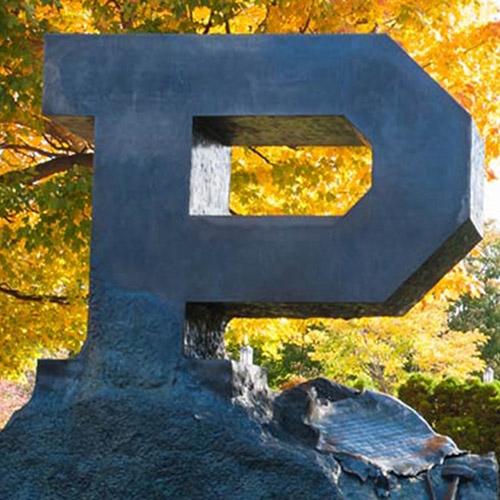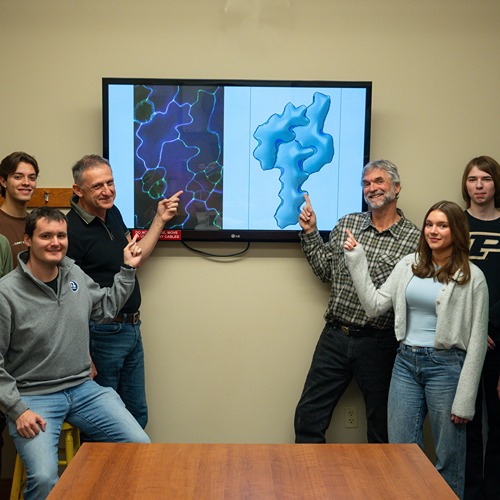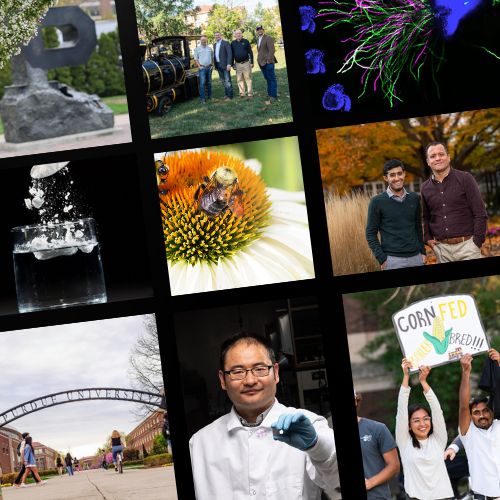Purdue research reveals plant volatiles released more deliberately than once thought
A Purdue University team of scientists upended a long-held assumption about how plant volatile compounds, the chemicals that are responsible for scent, move to the outside of the cells to attract pollinators, defend the plant and perform other key functions.
Natalia Dudareva, distinguished professor of biochemistry and the project’s principal investigator, said volatile compounds are actively trafficked out of cells through the use of an ATP-binding cassette transporter (ABC transporter), which moves substances across cell membranes. She worked with John Morgan, professor of chemical engineering, and Joshua Widhalm, a Purdue assistant professor of horticulture, and Funmilayo Adebesin, a doctoral student in Purdue’s Department of Biochemistry, as well as collaborators at the Université Catholique de Louvain and the University of Amsterdam.
“People assumed emission of volatile compounds from plant tissues was simple diffusion. Nobody considered it could be active transport,” said Dudareva, whose findings were published in the journal Science.
If diffused, volatile compounds would simply move in an unregulated manner from areas of high concentration inside the cells to low concentration outside the cells. But since the process requires an ABC transporter, that means the buildup and release of these compounds could be modified to help plants overcome effects of climate change on volatile emission, for example.
“If we want to increase pollination or improve plant defense, we need to know what we need to manipulate,” Dudareva said. “Volatiles also protect plants against abiotic stresses — light, temperature and oxidative stresses — and volatiles play a significant role in the atmosphere.”
Morgan said to uncover the method for volatile transport, the researchers reasoned that in a diffusion-based model the compounds should reside in a hydrophobic environment such as a cell membrane. But he knew that there would be far too many accumulating in membranes, causing damage, if they were exclusively diffusing.
That led the team to consider whether a transporter was involved. Widhalm said he looked at petunia gene expression observed at the bud stage, when hardly any volatiles are released, and at the second day of flowering, when volatile release is at its height. They observed a significant difference in the expression of the gene that controls the ABC transporter.
Adebesin then suppressed the transporter gene and observed a significant decrease in the amount of volatiles emitted. With reduced active transport, the volatile compounds accumulated inside of the cells and were found to destroy cell membranes, as the team had hypothesized.
The finding is one significant factor in the processes controlling creation and emission of volatile compounds.
“This is one step of many barriers with which volatiles have to pass through,” Morgan said. “To mathematically model the transport, we do need to uncover the other factors. There are several barriers that horses have to jump over gates to get out of the pen — and this is one of those gates.”
Next, the researchers plan to go one step back in the process to determine how volatile compounds make their way to cell membranes. The National Science Foundation, the Belgian National Fund for Scientific Research and the Interuniversity Poles of Attraction Program funded the research.






